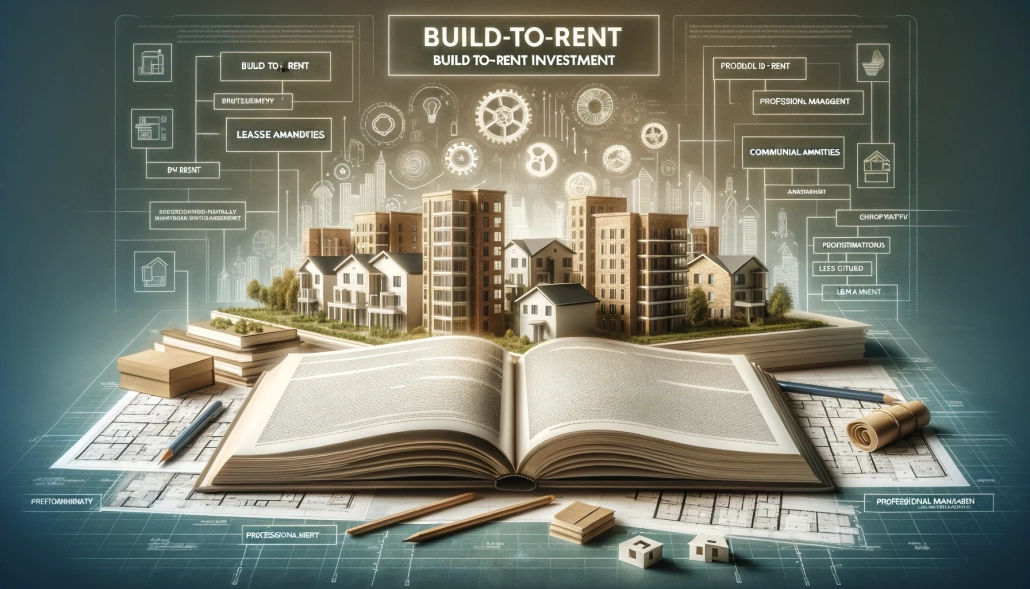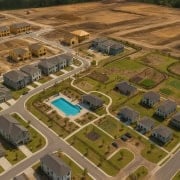Terminology Guide for Build-to-Rent Investment
We recently released a Build-to-Rent (BTR) Development model to help students and developers better analyze this emerging investment type in commercial real estate. As we explored this type of analysis, it became clear that terminology is often distinct and evolving in this space.
To that end, we thought we’d share some of the distinct and evolving terms in BTR. This is a complement to our Glossary of CRE Terms where you’ll find definitions related to BTR.
Build-to-Rent (BTR) vs. Build-for-Rent (BFR)
In the United States, “Build-to-Rent” (BTR) and “Build-for-Rent” (BFR) are terms often used interchangeably but with nuanced differences. BTR specifically refers to the development of attached and detached homes intended for rental, with shared amenities and single ownership. BFR, however, generally covers a broader range of commercial real estate projects intended to be leased (rather than sold to owner/user-occupants) at completion.
The distinction between “building houses for rent” and “building houses to rent,” while subtle, carries significant weight in the Build-to-Rent (BTR) realm. The New Home Trends Institute’s Build to Rent Council strongly favors the term “Build-to-Rent” for its wider acceptance across various stakeholders, including consumers, municipalities, and online platforms. This preference is strategic, aimed at enhancing the sector’s appeal to a broader audience, optimizing search engine visibility, and fostering positive perceptions among local governments.
Common Terms in Build-to-Rent
The Build-to-Rent (BTR) lexicon is continually evolving, paralleling the sector’s growth and its complex interplay with consumer preferences and municipal regulations. Key terms like “Professionally Managed Rental Home Community,” “Private Yards,” and the clear distinction between “Attached” and “Detached Homes” are central to understanding BTR’s distinct value proposition.
Build-to-Rent (BTR)
This term signifies a development strategy focused on constructing residential properties, predominantly single-family homes or duplexes, designed exclusively for rental. BTR developments are characterized by their community-centric approach, featuring shared amenities and managed as a unified entity, ensuring a seamless living experience.
Professionally Managed Rental Home Community
Denotes a BTR project managed by a specialized company, guaranteeing uniform quality, maintenance, and tenant services. This model stands in contrast to properties managed by individual landlords, offering a higher standard of living and community consistency.
Private Yards
Refers to the exclusive outdoor areas assigned to each home within a BTR community, enhancing the private living experience by offering personal outdoor spaces.
Cottage Style
Describes BTR homes designed with a cozy, individualized feel, often featuring a smaller footprint and distinctive aesthetic elements. These homes deviate from traditional designs, providing a unique living experience reminiscent of standalone cottages.
Attached Homes
This term applies to BTR residences like townhouses/duplexes that share walls with adjacent units, offering a balance between community living and individual privacy.
Detached Homes
Refers to standalone houses within a BTR community, with no shared walls, offering maximum privacy and space, embodying the essence of single-family living.
Lease vs. Rent
In the BTR context, “lease” is favored over “rent” to convey a long-term occupancy commitment, mirroring the more enduring nature of leasing compared to short-term rentals.
Newly Built
Highlights the brand-new construction status of BTR homes, countering any negative rental property stereotypes and underscoring the modern amenities and design features that come with new developments.
5-Star, 4-Star, 3-Star Experiences
Adopts a classification akin to the hospitality industry, rating BTR communities based on the quality and range of amenities and services provided, thus setting clear expectations for tenants and investors alike.
Frequently Asked Questions about Build-to-Rent (BTR) Terminology
What is the difference between Build-to-Rent (BTR) and Build-for-Rent (BFR)?
While often used interchangeably, BTR refers specifically to attached and detached rental homes with shared amenities under single ownership, whereas BFR can describe a broader range of commercial rental properties not intended for sale to owner-occupants.
Why is “Build-to-Rent” preferred over “Build-for-Rent”?
According to the New Home Trends Institute’s BTR Council, “Build-to-Rent” is more widely accepted by consumers, municipalities, and search engines. It helps enhance market perception and supports better strategic positioning for developers.
What defines a “Professionally Managed Rental Home Community”?
This term refers to a BTR community managed by a specialized firm that ensures uniform maintenance, services, and quality standards, differentiating it from individually managed rental units.
What are “Private Yards” in the BTR context?
“Private Yards” are exclusive outdoor areas attached to individual homes in a BTR community, providing tenants with personal outdoor space and enhancing the single-family rental experience.
How do “Attached” and “Detached” homes differ in BTR projects?
Attached homes, like townhomes and duplexes, share one or more walls with neighboring units. Detached homes are standalone units, offering maximum privacy and the feel of traditional single-family living.
Why is “lease” preferred over “rent” in BTR terminology?
In BTR, “lease” is favored because it implies a long-term housing arrangement, whereas “rent” can suggest short-term occupancy. This distinction helps align the terminology with institutional-grade residential investment standards.
What does “Cottage Style” mean in BTR design?
“Cottage Style” refers to smaller, cozy BTR homes that offer a unique aesthetic and individualized feel, setting them apart from conventional rental housing with a more intimate and distinct design.
What is meant by “Newly Built” in BTR marketing?
“Newly Built” emphasizes that the homes are of recent construction, helping counter stereotypes associated with older rentals and highlighting modern design, amenities, and energy efficiency.
What are “5-Star, 4-Star, 3-Star” experiences in BTR communities?
This classification borrows from hospitality rating systems to describe the level of amenities and services in BTR communities. It helps set tenant expectations and guides investor benchmarking.




